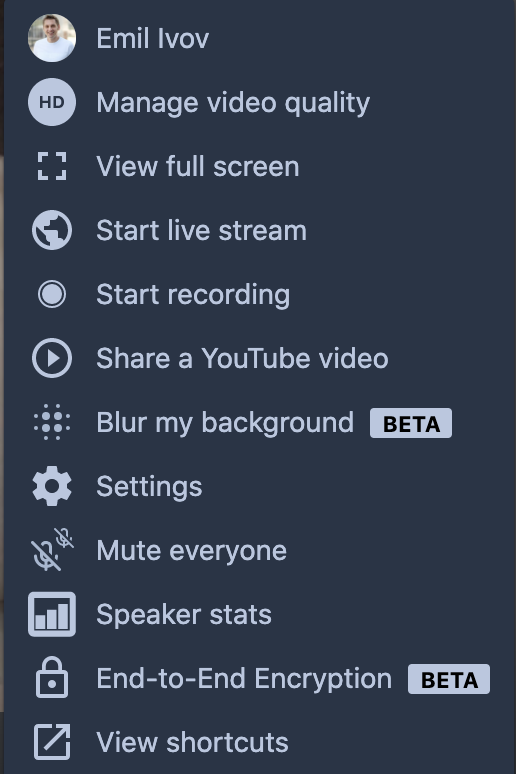Does Jitsi support end-to-end encryption?
The short answer is: Yes, we do!
You can turn on end-to-end encryption (e2ee) as long as you are using Jitsi Meet on a browser with support for insertable streams. Currently this means any browser based on Chromium 83 and above, including Microsoft Edge, Google Chrome, Brave and Opera. You may also use our Electron client, which supports it out of the box.
All you need to do is select the “End-to-end Encryption” option in the overflow menu and then make sure that all participants fill in the same pass word or phrase in the Key field.


You can learn more about our e2ee support at: https://jitsi.org/e2ee
Jitsi Meet offers very strong protection even if you don’t explicitly turn on e2ee. Here are more details:
Jitsi meetings in general operate in 2 ways: peer-to-peer (P2P) or via the Jitsi Videobridge (JVB). This is transparent to the user. P2P mode is only used for 1-to-1 meetings. In this case, audio and video are encrypted using DTLS-SRTP all the way from the sender to the receiver, even if they traverse network components like TURN servers.
In the case of multiparty meetings all audio and video traffic is still encrypted on the network (again, using DTLS-SRTP). This outer layer of DTLS-SRTP encryption is removed while packets are traversing Jitsi Videobridge; however they are never stored to any persistent storage and only live in memory while being routed to other participants in the meeting.
It is very important to note that when packets are also end-to-end encrypted, this second layer of encryption is never removed (nor can it be)
Since Jitsi is built on top of WebRTC, a deeper look into its security architecture is very important when evaluating Jitsi’s security aspects.
